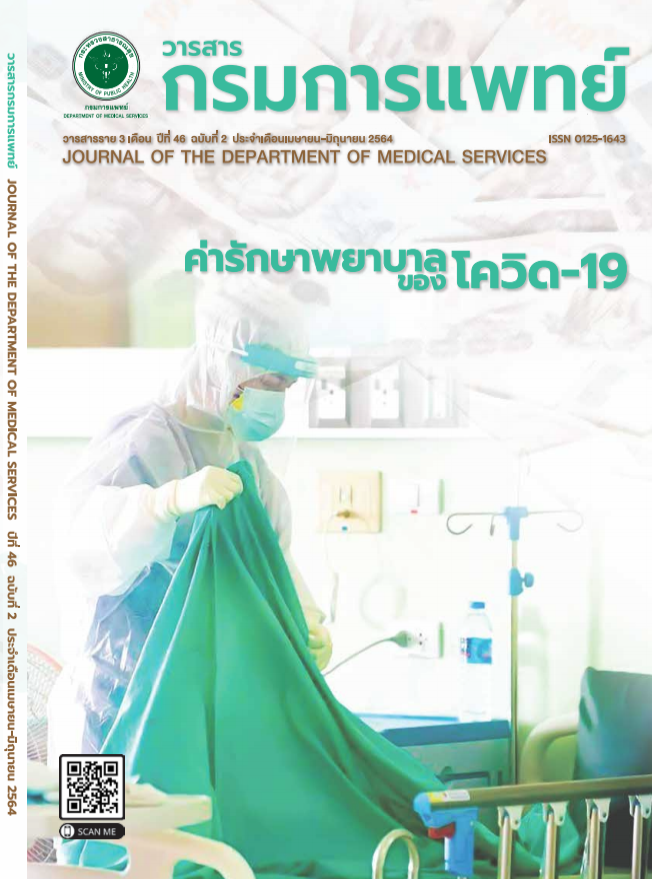The Accuracy of Salivary Protein Biomarkers for Detection of Oral Squamous Cell Carcinoma: A Systematic Review and Meta-analysis
Keywords:
Salivary protein biomarker, Oral squamous cell carcinoma, Systematic review, Meta-analysisAbstract
Background: There are various studies about salivary biomarkers in oral squamous cell carcinoma detection at the present. Many studies support that saliva may be considered as a promising for oral squamous cell carcinoma diagnosis and prognosis tool. Numerous studies also found that salivary protein biomarker yielded high sensitivity and high specificity.Objective: The systematic review and meta-analysis was to find out the accuracy of salivary protein biomarker in detection of oral squamous cell carcinoma.Methods: The following database were searched from 2000 to July 2020 from PubMed, google scholar and hand search.Results: Total of 15 studies which are prospective blinded trial, case-controlled studies, cross-sectional studies were included in this systematic review and meta-analysis. Sensitivity and specificity with 95% confidence interval are generated. The results showed pooled sensitivity of 0.78 (95% CI = 0.74, 0.82) and specificity of 0.71 (95% CI = 0.65, 0.76). ODD-ratio subgroup analysis was also generated in which the result showed that Cytokines salivary protein biomarker had higher ODD-ratio 11.41 (95% CI = 7.92, 16.45) compared to metalloproteinase salivary biomarkers 7.88 (95% CI = 5.72, 10.86) and other proteins salivary protein biomarker 5.55 (95% CI = 5.09, 6.10).Conclusion: Salivary protein biomarkers might not be sensitive and specific enough to serve as a detection tool of oral squamous cell carcinoma. Protein cytokines markers had high ODD-ratio but with its high wide range of confidence interval and low quality of studies, further studies of salivary protein biomarkers need to be developed.
References
Kaur J, Jacobs R, Huang Y, Salvo N, Politis C. Salivary biomarkers for oral cancer and pre-cancer screening: a review. Clin Oral Investig 2018;22:633-40.
Chandu A, Smith AC, Rogers SN. Health-related quality of life in oral cancer: a review. J Oral Maxillofac Surg 2006;64:495-502.
Bray F, Ferlay J, Soerjomataram I, Siegel RL, Torre LA, Jemal A.Global cancer statistics 2018: GLOBOCAN estimates of incidence and mortality worldwide for 36 cancers in 185 countries. CA Cancer J Clin 2018;68:394-424.
Sankaranarayanan R, Ramadas K, Amarasinghe H, Subramanian S, Johnson N. Oral Cancer: Prevention, Early Detection, and Treatment. In: Gelband H, Jha P, Sankaranarayanan R, Horton S, editors. Cancer: Disease Control Priorities, Third Edition (Volume 3). Washington (DC);2015.
Johnson NW, Jayasekara P, Amarasinghe HK. Squamous cell carcinoma and precursor lesions of the oral cavity:epidermiology and etiology. Periodontol 2000. 2011;57:19-37.
Werning JW. Oral cancer : diagnosis, management, and rehabilitation. New York: Thieme Medical Publishers;2007. p.354.
Toh Y, Oki E, Ohgaki K, Sakamoto Y, Ito S, Egashira A, et al. Alcohol drinking, cigarette smoking, and the development of squamous cell carcinoma of the esophagus: molecular mechanisms of carcinogenesis. Int J Clin Oncol 2010;15:135-44.
Giri S, Idle JR, Chen C, Zabriskie TM, Krausz KW, Gonzalez FJ.A metabolomic approach to the metabolism of the areca nut alkaloids arecoline and arecaidine in the mouse. Chem Res Toxicol 2006;19:818-27.
Kumar M, Nanavati R, Modi TG, Dobariya C. Oral cancer: Etiology and risk factors: A review. J Cancer Res Ther 2016;12:458-63.
Brinkmann O, Kastratovic DA, Dimitrijevic MV, Konstantinovic VS, Jelovac DB, Antic J, et al. Oral squamous cell carcinoma detection by salivary biomarkers in a Serbian population. Oral Oncol 2011;47:51-5.
Meleti M, Cassi D, Vescovi P, Setti G, Pertinhez TA, Pezzi ME.Salivary biomarkers for diagnosis of systemic diseases and malignant tumors. A systematic review. Med Oral Patol Oral Cir Bucal 2020;25:e299-e310.
Liao PH, Chang CY, Huang MF, Tai KW, Chou MY. Mutation of p53 gene codon 63 in saliva as a molecular marker for oral squamous cell carcinomas. Oral Oncol 2000;36:272-6.
Shree KH, Ramani P, Sherlin H, Sukumaran G, Jeyaraj G, Don KR, et al. Saliva as a Diagnostic Tool in Oral Squamous Cell Carcinoma - a Systematic Review with Meta Analysis. Pathol Oncol Res 2019;25:447-53.
Rajkumar K, Nandhini G, Ramya R, Rajashree P, Kumar AR,Anandan SN. Validation of the diagnostic utility of salivary interleukin 8 in the differentiation of potentially malignant oral lesions and oral squamous cell carcinoma in a region with high endemicity. Oral Surg Oral Med Oral Pathol Oral Radiol 2014;118:309-19.
Hirunyakorn K, Thaweedej S. The Accuracy of Salivary Biomarkers Detection of Oral Cancer: A Meta-Analysis.Journal of The Department of Medical Services 2020;45:193-201.
AlAli AM, Walsh T, Maranzano M. CYFRA 21-1 and MMP-9 as salivary biomarkers for the detection of oral squamous cell carcinoma: a systematic review of diagnostic test accuracy. Int J Oral Maxillofac Surg 2020;49:973-83.
Yu JS, Chen YT, Chiang WF, Hsiao YC, Chu LJ, See LC, et al. Saliva protein biomarkers to detect oral squamous cell carcinoma in a high-risk population in Taiwan. Proc Natl Acad Sci U S A.2016;113:11549-54.
Downloads
Published
How to Cite
Issue
Section
License

This work is licensed under a Creative Commons Attribution-NonCommercial-NoDerivatives 4.0 International License.
บทความที่ได้รับการตีพิมพ์เป็นลิขสิทธิ์ของกรมการแพทย์ กระทรวงสาธารณสุข
ข้อความและข้อคิดเห็นต่างๆ เป็นของผู้เขียนบทความ ไม่ใช่ความเห็นของกองบรรณาธิการหรือของวารสารกรมการแพทย์



